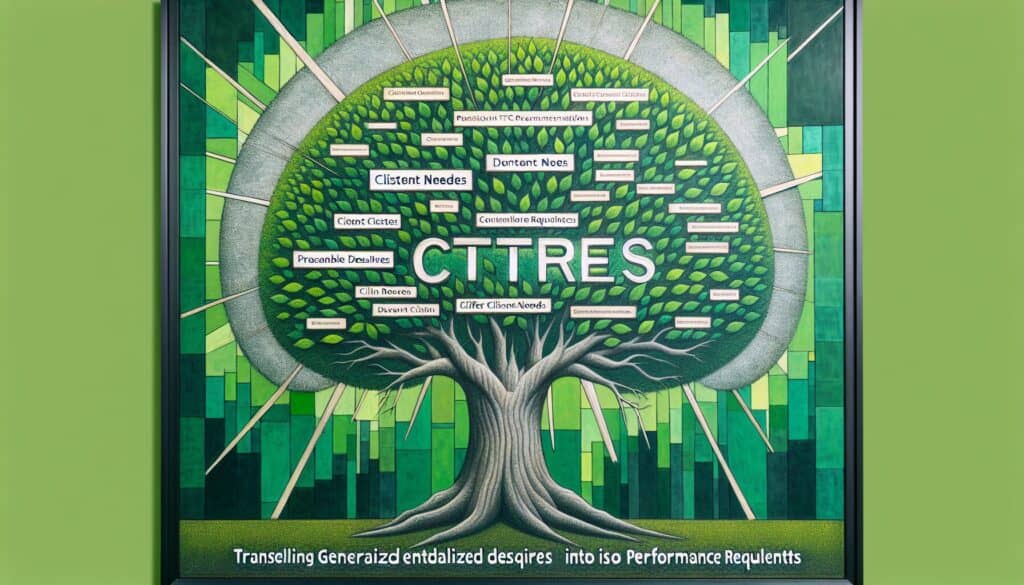To translate broad customer needs into specific, measurable performance requirements.
- المنهجيات: الهندسة, الجودة
شجرة الجودة الحرجة للجودة (CTQ)

شجرة الجودة الحرجة للجودة (CTQ)
- Critical to Quality (CTQ), تجربة العملاء, تخطيط رحلة العميل, تحسين العمليات, تحسين العمليات, ضمان الجودة, مراقبة الجودة, نشر وظائف الجودة (QFD), إدارة الجودة
الهدف:
كيفية استخدامه:
- Starts with a critical customer need, then branches out to identify key drivers and finally specific, measurable characteristics that must be met.
الايجابيات
- Provides a clear line of sight from customer needs to process requirements; helps prioritize efforts.
سلبيات
- Can be time-consuming to develop comprehensively; may require significant customer input to be accurate.
الفئات:
- لين سيجما, تصميم المنتج, الجودة
الأفضل لـ
- Defining and prioritizing key quality characteristics based on customer needs.
The CTQ Tree methodology is particularly beneficial in industries where meeting customer expectations is paramount, such as automotive, healthcare, and consumer electronics. This methodology can be employed during the requirements gathering phase of product development, enabling teams to translate customer demands into actionable specifications. Stakeholders, including product managers, engineers, and quality assurance teams, should be involved in the process to ensure a comprehensive understanding of customer needs and to facilitate collaborative identification of key drivers and measurable characteristics. For instance, in the automotive sector, a CTQ Tree may help elucidate customer preferences for safety features by breaking down the overarching need for safety into specific criteria like airbag deployment speed or the effectiveness of braking systems, which can then be measured and tested throughout the design and manufacturing process. This structured approach not only prioritizes aspects that most significantly impact customer satisfaction but also aligns cross-functional teams towards common quality objectives. By establishing a clear connection between customer feedback and tangible product attributes, the methodology promotes accountability and encourages a culture of quality within organizations, ultimately leading to improved product offerings and a stronger market position.
الخطوات الرئيسية لهذه المنهجية
- Identify the primary customer need.
- Map the primary need to potential key drivers.
- Determine measurable characteristics linked to each driver.
- Prioritize the characteristics based on their impact on customer satisfaction.
- Define specifications for each prioritized characteristic.
نصائح للمحترفين
- Involve cross-functional teams early in the process to ensure diverse perspectives on customer needs and drivers.
- Utilize statistical methods such as Design of Experiments (DOE) to quantify the relationship between CTQs and their impact on customer satisfaction.
- Regularly revisit and revise the CTQ tree as customer feedback and market conditions evolve, ensuring alignment with real-world needs.
لقراءة عدة منهجيات ومقارنتها, نوصي باستخدام
> مستودع المنهجيات الشامل <
مع أكثر من 400 منهجية أخرى.
نرحب بتعليقاتكم على هذه المنهجية أو المعلومات الإضافية على قسم التعليقات أدناه ↓، وكذلك أي أفكار أو روابط متعلقة بالهندسة.
السياق التاريخي
1962
1970
1972
1980
1980
1986
1986
1960
1963
1970
1980
1980
1980
1986
1987
(إذا كان التاريخ غير معروف أو غير ذي صلة، على سبيل المثال "ميكانيكا الموائع"، يتم تقديم تقدير تقريبي لظهوره الملحوظ)















منشورات ذات صلة
استبيانات الانزعاج العضلي الهيكلي
الاختبار متعدد المتغيرات (MVT)
تحليل الانحدار المتعدد
أنظمة التقاط الحركة
طريقة MoSCoW
اختبار متوسط المزاج